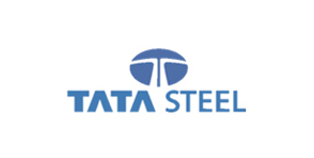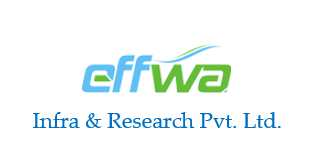
Ferro Alloy & Minerals Division (FAMD) of Tata Steel operates India’s largest Chromite Mine at Sukinda, Odisha India. The Open cast mine produces Chrome Ore which is subsequently converted to Ferro chrome for use at Tata Steel and sales in India and abroad to Major Stainless Steel units. Effwa has received the order from Tata Steel Ltd., Sukinda, Odisha, for establishing 5400 m3/hr effluent treatment plant to treat surface runoff and complex Chromite Mining Effluent generated during mining.
Presence of hexavalent chromium in mine water of Sukinda valley was first reported in 1990, & Tata Steel pioneered finding out a suitable method of treating hexavalent chromium through NEERI, Nagpur. Tata has total lease hold area of 406 hectares in Sukinda. An effluent treatment plant was set up in 1993 using pickle liquor. Further, a pilot plant was set up in 1998 using FeSO4 & after successful trials; a full-fledged effluent treatment plant (ETP-1) with roughing filters to remove suspended solids was set up in 2002 to handle mine water discharge of 650 KL/h.
Presently, Tata Steel has three existing ETPs for treatment of effluents which are as under:
Main ETP (ETP-1) : 13240 KLD (To treat mine discharge)
Geological ETP (ETP-2) : 30000 KLD (to treat Surface runoff)
Temple ETP (ETP-3) : 20000 KLD (To treat Surface runoff)
As the mine is getting deeper, it is likely to need more de-watering, besides which, once the proposed underground mining reached its rated capacity, the quantum of mine discharge water is likely to increase up to 1500 m3/hr. Thus it is proposed to augment the existing ETP to handle higher volumes of water in modular fashion.
Chromium is found in two forms in waste streams i.e. hexavalent (Cr6+) and trivalent (Cr3+). Hexavalent chromium compounds are genotoxic carcinogens. Hexavalent chromium is transported into cells via the sulfate transport mechanisms, taking advantage of the similarity of sulfate and chromate with respect to their structure and charge.
TSL, out of concern for environment sustainability, has planned a state-of-the-art effluent treatment plant to address this issue. Apart from meeting stringent pollution control board (PCB) norms, TSL specified that the treated effluent should also meet more stringent norms of Hexavalent Chromium of <0.001 ppm. Effwa Infra & Research Pvt Ltd. was selected to set up a turnkey effluent treatment solution that would meet these requirements for total cost of Rs. 330.0 Million.
Client

Consultant

Technology Partner/ Contractor

Design Philosophy of the Proposed Effluent Treatment Plant
Treatment of chromium bearing effluent usually consists of two stage process; first, the reduction of hexavalent chromium to trivalent form and second, precipitation of the trivalent chromium.
1. Hexavalent chromium is a strong oxidizing agent and can readily be reduced to trivalent chromium by means of adding reducing agent i.e. Ferrous Sulphate (FeSO4). After proper mixing with Ferrous Sulphate in flash mixer the hexavalent chromium(Cr6+) is reduced to trivalent chromium (Cr3+) while Ferrous ion will be oxidized to Ferric ion Fe3+.
a) If water contains chromates [CrO4]2-
[CrO4]2-+ 6Fe2+ + 8H+ → Cr3+ + 6Fe3+ + 4H2O
b) If water contains dichromate [Cr2O7]2-
[Cr2O7]2 – + 6 Fe2+ + 14(H+) → Cr3+ + 6Fe3+ + 7H2O
2. In the next stage by adding alkaline reagent i.e. Sodium Hydroxide (NaOH) / Lime Ca(OH)2 , the Ferric ion and Chromium ion will be precipitated jointly at pH 8.0 to 8.5 as Ferric Hydroxide [Fe(OH)3] and Chromium Hydroxide [Cr(OH)3] respectively.
a) 2Cr3+ + 3Ca(OH)2 → 2Cr(OH)3 + ↓3Ca2+
b) 2Fe3+ + 3Ca(OH)2 → 2Fe(OH)3 + ↓3Ca2+
3. The supernatant from settling tank is further filtered for removal of Fe3+ in form of suspended solids.
Treatment Philosophy of the Proposed Effluent Treatment Plant
The Common Effluent Treatment Plant (ETP) is designed in modular fashion with 1500 m3/hr each x 3 modules at ETP-2 location.
ETP 3: The effluent presently coming at ETP-3 location will be tapped at suitable upstream location in an underground collection tank with 1 hour retention time and from there it will be pumped to collection tank of common effluent treatment plant at ETP-2 location. One screen chamber and Grit Removal system shall also be provided along with pumping station.
ETP 2 (Combined): Effluents generated from surface runoff shall be passed through screen chamber with screen having clear opening of 40 mm followed by grit chamber from where grit will be collected by mechanized means. The overflow of grit chamber shall be collected in collection cum equalization tank along with pumped effluent from Pumping station and pumped at controlled rate to Flash Mixing Tank-I where acid along with FeSO4 shall be dosed to effectively reduce the pH and reduction of Cr6+ (Interlocking of dosing pumps with pH Controller and Cr6+ transmitter) prior to Common Reaction Channel. Common Flash Mixing Tank-II shall be provided at the end of reaction channel where polyelectrolyte and lime shall be dosed through metering pumps to raise the pH to 8 to 8.5 (Interlocking of pH controller with lime dosing pumps and polyelectrolyte dosing with Flow Transmitter) prior to Distribution Chamber from where effluent will be distributed to three modular Clariflocculators. The effluent from pumping station (ETP 3) could directly be let into Inlet Chamber (provisional) or Collection Tank. The supernatant from Clariflocculators shall be let into Rapid Gravity Sand Filters. Acid will be dosed in Filters Feed Channel through dosing pumps (interlocking of pH controller with dosing pumps) prior to Filter Beds for bringing the pH in the range of 7 to 7.5 or as desired. The filtered water shall be collected in Treated Water Tank and could be disposed off meeting standards stipulated by OSPCB or reused in horticulture or haul roads dust suppression. Tanker Filling Post will be provided near the ETP Road. The treated water shall also be used as filter backwash water. The filter backwash will be drained to Collection Tank. The sludge from the clariflocculators is continuously withdrawn in common sludge holding tank and pumped to decanter centrifuge for sludge dewatering and centrate shall be taken back to collection tank. The dewatered sludge shall contain Cr(OH)3 and Fe(OH)3 which could either be reprocessed or disposed off through secure landfills.
The scope of the contract includes turnkey civil design, complete electrical, instrumentation and a remote monitoring system in line with stringent design and safety criteria specified by Tata Consulting Engineers Ltd., Jamshedpur, TSL’s consultant for this project.
Effwa Infra & Research Pvt. Ltd. will thus deliver a world class, environmentally sustainable technology solution for the complex Effluent generated in TSL’s Sukinda Chromite Mines project.
Team Effwa relentlessly works towards solution formulation for various complex environmental issues of the 21st century. Effwa is an engineering powerhouse dedicated to making earth a little beautiful every day by providing the highest quality of environmental services to industries and municipal authorities worldwide.


